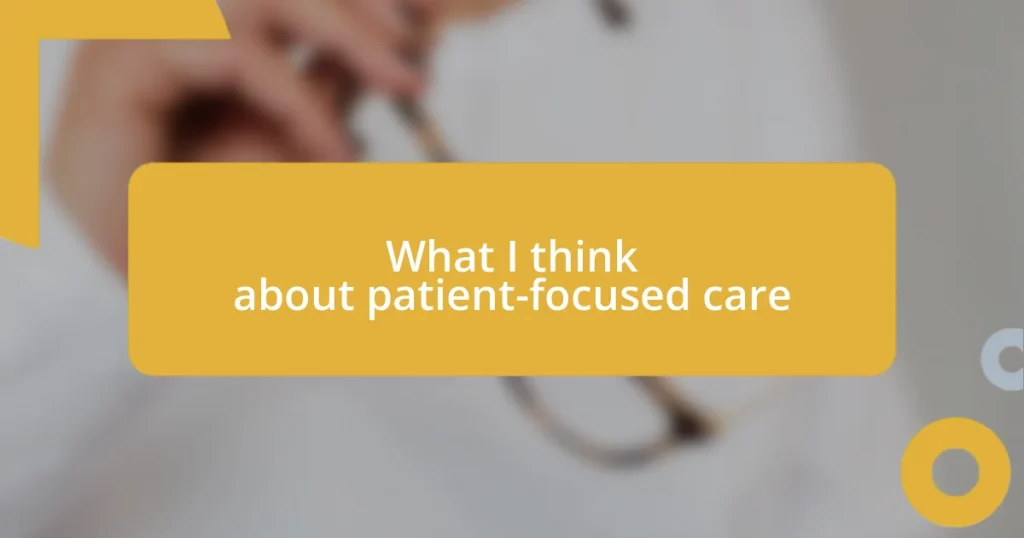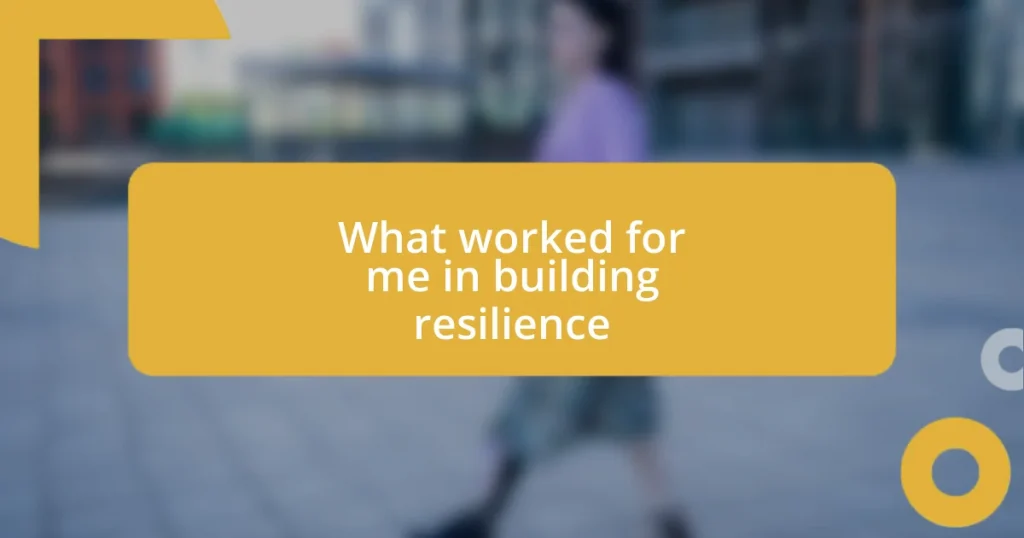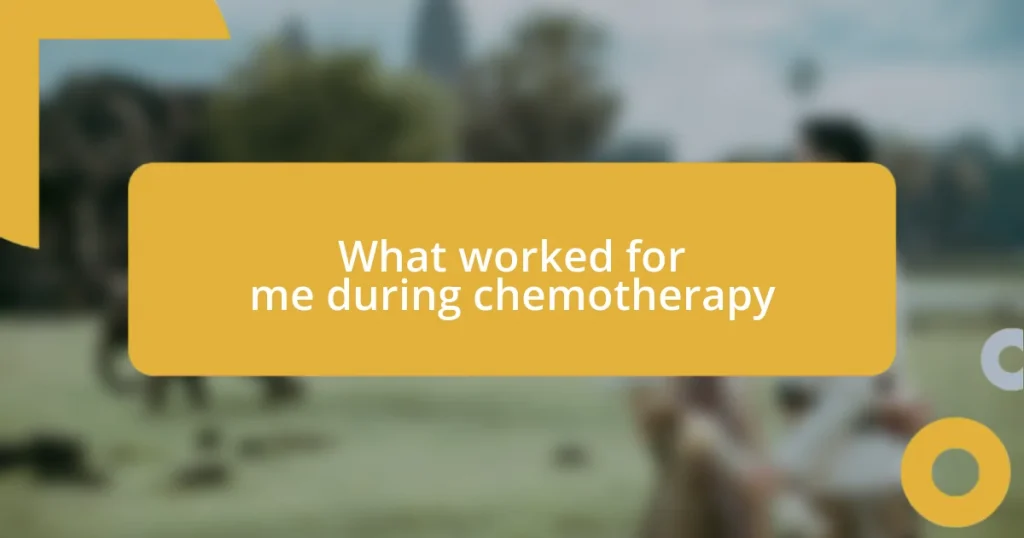Key takeaways:
- Patient-focused care enhances communication and collaboration, leading to personalized treatment and improved health outcomes.
- Measuring patient satisfaction through both quantitative and qualitative methods helps healthcare providers understand patient experiences and improve care quality.
- Challenges such as varying health literacy and time constraints hinder effective patient engagement, necessitating streamlined communication and care coordination.

Understanding patient-focused care
Patient-focused care goes beyond just treating medical conditions; it’s about seeing the whole person. I recall a time when a friend underwent surgery, and the doctors took special care to involve her in every decision. They listened to her feelings and preferences, which made her feel valued and empowered. Doesn’t it make you feel more at ease when your voice is heard in your own care?
At its core, patient-focused care emphasizes empathy and active listening. I’ve witnessed firsthand how a simple, warm conversation with a nurse during a routine check-up can alleviate anxiety. It’s like they have this hidden power to turn a sterile environment into a space of comfort and trust. What if we all experienced that kind of care—how do you think it might change our health outcomes?
An important aspect of this approach is tailoring care to the individual’s unique needs and values, fostering a partnership between patient and provider. When patients feel that their input is valued, I believe it leads to better adherence to treatment plans. Isn’t it essential that care reflects who we are, rather than a one-size-fits-all treatment? That’s what makes patient-focused care not just a trend, but a necessity for enhancing overall well-being.

Benefits of patient-focused care
One of the most significant benefits of patient-focused care is increased patient satisfaction. I remember speaking with a patient who shared how a healthcare team took the time to explain her treatment options clearly. She felt relieved and more invested in her care plan, which made her entire experience smoother and more positive. When patients feel understood and supported, it can have a profound impact on their overall attitude toward their health.
Here are some key benefits of patient-focused care:
- Enhanced communication: Open dialogue between patients and healthcare providers fosters trust and transparency.
- Improved health outcomes: Personalized care often leads to better adherence to treatment and management of chronic conditions.
- Stronger patient-provider relationships: When patients feel involved, it creates a collaborative environment, encouraging a sense of partnership.
- Reduced anxiety: Knowing that their concerns are being listened to can significantly alleviate patients’ fears and stress.
- Empowerment: Involving patients in decision-making helps them feel they have control over their health journey.

Key principles of patient-focused care
The key principles of patient-focused care lie in respecting and understanding each patient’s unique journey. I can vividly recall a time when I was in a consultation room and the doctor paused, looking directly at me as he asked about my personal goals. That moment wasn’t just about my diagnosis; it was about crafting a care strategy that resonated with my values. When healthcare providers prioritize this individual connection, treatments become more effective and meaningful.
Another fundamental principle is the collaboration between patients and their healthcare teams. In my experience observing a family member undergo cancer treatment, I saw how crucial it was for the team to include both him and us—his family—in discussions. This collaboration extended beyond simply following a treatment plan; it nurtured an environment where we felt we could actively participate and voice our concerns. Isn’t it empowering when you feel like a true partner in your own care?
Lastly, continuous communication is essential in fostering a patient-focused approach. I recall a particularly impactful moment when a nurse made it a point to check in with me regularly during a lengthy procedure. Her efforts to keep me informed and engaged not only calmed my nerves but also built a bridge of trust. Each update was not just a medical update; it was a reminder that I was part of a caring team. I genuinely believe that when communication flows freely, it creates a ripple effect, enhancing the entire patient experience.
| Principle | Description |
|---|---|
| Respect for Individual Needs | Recognizing and tailoring care to each patient’s unique values and goals. |
| Collaboration | Building partnerships between patients and healthcare providers for shared decision-making. |
| Continuous Communication | Maintaining an open dialogue to ensure patients feel informed and supported throughout their care. |

Strategies for implementing care
Implementing patient-focused care requires a thoughtful approach to ensure that every voice is heard. From my experience, creating structured feedback loops can be incredibly effective. Whether through surveys or informal check-ins, it’s vital to actively seek patient input. I remember a clinic that introduced a simple suggestion box, and the changes they made based on that feedback significantly improved the patient experience. Don’t you think having a direct line to share thoughts can make such a difference?
Another strategy that stands out is the integration of care teams. When I witnessed a multidisciplinary team discussing a patient’s case—doctors, nurses, social workers, and even the patient themselves—the power of collaboration was evident. Everyone brought a unique perspective, and it made the care plan richer and more comprehensive. How often do we get to be part of such a collaborative environment in healthcare? It truly fosters a collective sense of accountability.
Training healthcare providers to be empathetic is also a game-changer. I’ve seen workshops focused on active listening skills transform interactions between patients and providers. It’s amazing how a little training can help professionals connect on a deeper level. In these sessions, participants often share their own stories, leading to an emotional understanding of what patients go through. When providers genuinely connect with patients, it shifts the mindset from ‘treating a condition’ to ‘supporting a person’—and that’s where the real magic happens.
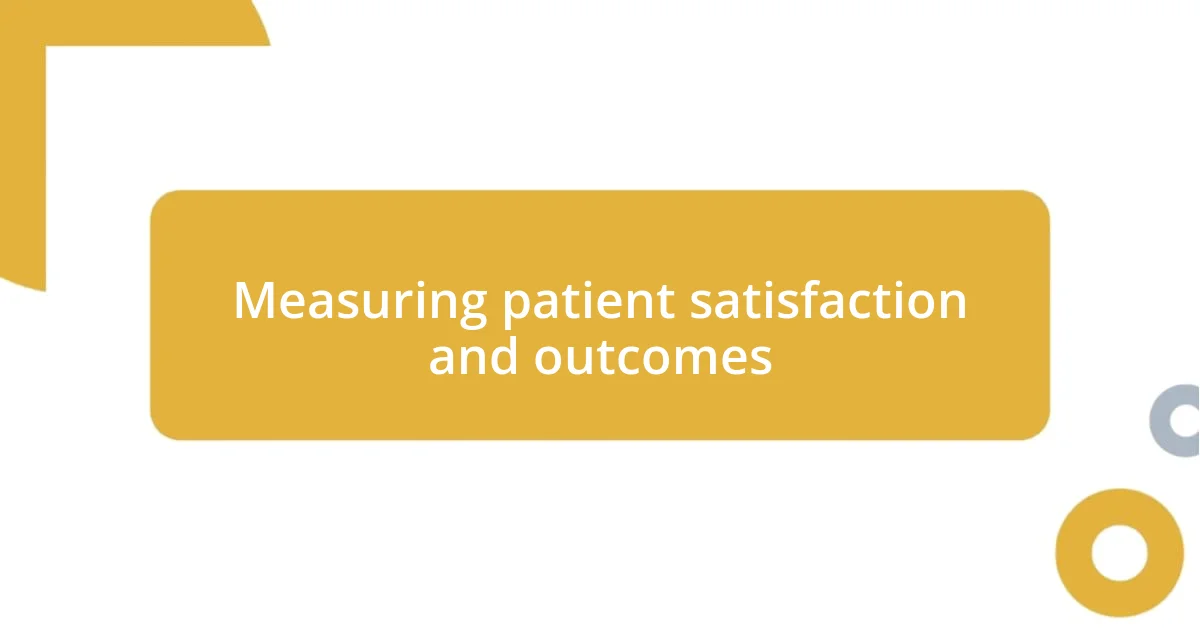
Measuring patient satisfaction and outcomes
Measuring patient satisfaction and outcomes is a vital aspect of ensuring that care remains patient-centered. I still remember filling out a patient satisfaction survey after a particularly intense therapy session. The simple act of expressing my thoughts made me feel valued, as if my feedback could truly influence the way services were provided. Isn’t it encouraging to think that our voices can shape healthcare practices?
Quantitative measures, like satisfaction scores, provide one piece of the puzzle, but qualitative insights are equally important. For instance, when I volunteered at a community health center, I witnessed how patient stories collected during focus groups revealed underlying issues that numbers often overlook. These narratives not only highlighted areas for improvement but also captured the essence of the patients’ experiences. Don’t you think these personal stories can sometimes tell us more than any statistic ever could?
Ultimately, the best outcomes come when we focus on not just satisfied patients but also their overall well-being. After a long recovery process from a serious illness, I was really struck by how a follow-up conversation with my healthcare provider made me feel supported. That connection emphasized that healthcare isn’t just about treating conditions; it’s about fostering a meaningful journey toward health. How do we measure that sense of connection in numeric terms? It’s a challenge, but one well worth pursuing.
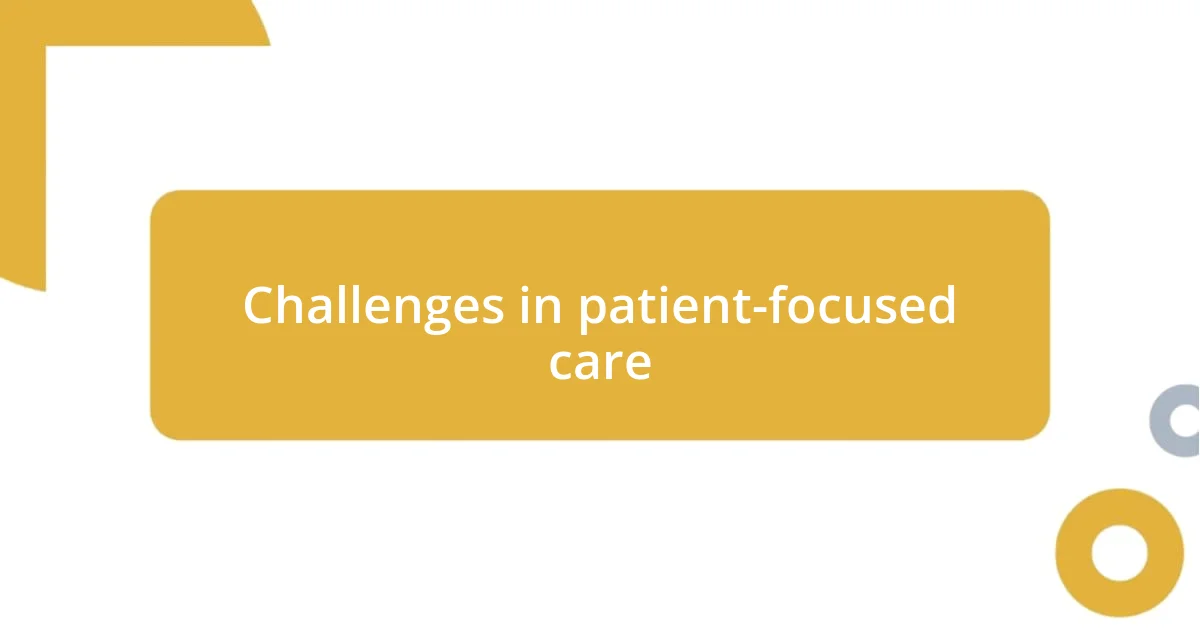
Challenges in patient-focused care
Patient-focused care faces a number of distinct challenges that can hinder its effectiveness. One major hurdle is the varying degrees of health literacy among patients. I’ve encountered patients who struggle to understand their treatment options, and it really reinforces the need for clear communication. Have you ever experienced a moment where the medical jargon felt like a foreign language? Simplifying that language can make a world of difference in helping patients feel empowered in their care decisions.
Another challenge revolves around the time constraints that healthcare providers often face. I recall a hectic day in a primary care clinic where providers rushed through appointments, compromising the opportunity for meaningful dialogue with patients. It made me wonder: how can we expect genuine patient engagement when providers are strapped for time? This often leads to a transactional rather than a relational approach to care, which can leave patients feeling unvalued and disconnected.
Additionally, integrating diverse care pathways into a smooth patient experience is no small feat. I remember a family member navigating multiple specialists for a chronic condition—it felt like a maze at times! The lack of coordinated care can result in fragmented experiences that confuse patients and diminish their trust in the system. Can you relate to the frustration of having to explain your medical history multiple times to different providers? Breaking down these silos is crucial to making patient-focused care a reality.

Future trends in patient-focused care
As we look ahead in patient-focused care, I anticipate the increasing role of technology—especially telehealth solutions. I remember my first virtual appointment; it felt a bit odd at first, but in that moment, I realized how much more accessible healthcare could become. Isn’t it fascinating that a simple video call can bridge the gap between patients and providers, giving them the ability to connect without geographical limitations?
Personalization in treatment plans is also on the rise. I once spoke with a patient who shared how their healthcare team created a plan tailored not just to their condition but to their lifestyle. This approach made all the difference, as it recognized that health is not a one-size-fits-all scenario. How refreshing would it be if more healthcare providers took the time to understand their patients’ unique circumstances and preferences?
Additionally, I see a stronger emphasis on collaborative decision-making. During a recent health workshop, I was struck by a phrase from a physician: “We’re not doing this to you; we’re doing this with you.” That simple shift in language fosters a sense of partnership and respect. Do you think that when patients are brought into discussions about their treatment, they feel a greater sense of ownership and empowerment over their health journey? That’s the kind of transformation I believe we will see more of in the future.










